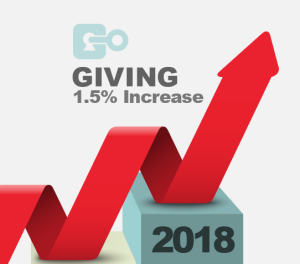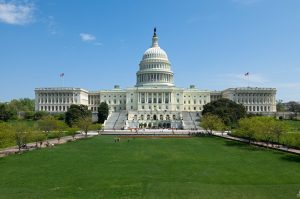Organizations re-evaluating the ROI of investments
A federal program to provide loans to low-income homeowners for energy efficiency upgrades and improvements around renewable energy sounds like a no-brainer for a foundation dedicated to economic opportunities for people and communities. But, mission-aligned investments can sometimes be complicated.

The F.B. Heron Foundation, which has total assets of some $300 million, eventually divested from Property Assessed Clean Energy (PACE) financing after determining that the program conflicted with its mission. A program of the U.S. Department of Energy, PACE provides financing in several states for energy efficiency upgrades that homeowners can pay off over time through a property tax assessment.
While the objective might fit within its mission — empowering homeowners to invest in improvements that save energy and money – the financing was creating an issue on the other end. “We learned from on-the-ground partners the nature of how these loans work,” said Dana Bezerra, president of the New York City-based foundation. Contracts often were sold in living rooms or across dining room tables while being described to most borrowers as a government program that would be paid with their savings, she said. But when their property taxes went up as a result of the assessment, most low-income homeowners struggled with the increase. And as the senior-most lien — even superseding a homeowner’s mortgage — PACE loans often created a cascade effect leading to foreclosures.

“For a poverty-fighting organization, we made a judgment call. From the data and the experience of partners on the ground, the positive environmental effect did not outweigh the stripping of wealth,” Bezerra said.
The experience with PACE loans and others nudged Heron to move away from other investments, toward a framework that it refers to as net contribution. “All companies, all loans, are going to have negative and positive attributes,” Bezerra said. “It’s an imperfect art and science at this point,” she said.
In 2012, Heron made headlines by announcing it would move 100 percent of its holdings into mission-aligned investments. “We started down this road, naively, thinking we’ll be able to make a pile of good investments,” said Bezerra, who succeeded Clara Miller as president in 2017. “We learned in the process. It’s really a spectrum, a progression over time,” she said.
“Investments can’t just be declared impact investments, just mission investments. What is a mission investment for

Heron might not be for someone else,” she said. Data will continue to get better but there are judgment calls involved.
From Heron’s experience, Bezerra suggests the goal for a foundation should be to get from unexamined to examined investments that make an impact you find acceptable. In the case of poverty, Heron most often had to move from an impact position to mission, she said. While the foundation’s original declaration was 100 percent to mission, “where we arrived was 100 percent to impact,” she said.
“If the field wants to debate language, that’s fine,” Bezerra said. For Heron, which she described as “a bit of a scrappy doer of these,” it became an organizing language. “We needed a way to speak to each other. That’s how the spectrum evolved for us,” she said.
The PACE episode “highlights what our field doesn’t like to talk about — it’s complicated,” Bezerra said.
Larger foundations have followed suit, announcing intentions to move more of their endowments into mission-aligned investments. The Ford Foundation announced two years ago it would move $1 billion of its $12-billion endowment into mission-related investments over the next decade. A year ago, the Nathan Cummings Foundation committed to align its nearly half-billion-dollar endowment with its mission to reduce social inequality and mitigate climate change.
The field of impact investing and mission-aligned investments has been booming.
“Foundations have a particularly unique leadership role to play,” said Matt Onek, CEO of Mission Investors Exchange (MIE), a network of more than 250 foundations engaged in impact investing. “They are playing a unique role, ensuring that impact is at the head of this moment. The whole field is growing,” he said, with even large private equity firms starting impact funds.
Mission-related investments are more about looking at the endowment specifically, with organizations looking at making market rate returns aligned with their mission and values. The investments might be using all sorts of different tools, Onek said, from cash and private equity to venture capital.
There’s greater interest in gender and racial diversity in the field, Onek said, including looking at more diverse managers of funds, ensuring they’re investing in communities of color, women, and people of color. There also a huge interest in place-making and shareholder engagement, he added, pointing to efforts in Detroit by the Kellogg Foundation and others.
At The Russell Family Foundation (TRFF), impact investments now comprise about $100 million of the $141-million endowment, with about a quarter of its portfolio still not expressly aligned with mission since it began impact investing in 2003.
TRFF detailed its journey into mission-aligned investments in a case study released last fall titled, “The Impact Investing Journey: Aligning Portfolio with Purpose.” Founded in 1999, the foundation focuses on protecting the environment and empowering local communities in the Pacific Northwest and Puget Sound. By 2013, it began divesting its portfolio of fossil fuels in favor of alternatives, including sustainable forestry, organic farming and renewable energy in the Pacific Northwest.
Exploring its portfolio led to a divestment of 15 coal stocks and eventually from all oil, gas and coal holdings in favor of sustainable forestry, agriculture, and clean technology. TRFF reviews its invest-ment policy statement (IPS) at least annually to determine “whether stated investment objectives are still relevant and to assess feasibility of achieving objectives.”
Like any investor, TRFF is not always successful and it detailed in the case study some of lessons learned that have since led to stronger internal collaboration on new investment opportunities between finance and program staff.
The Gig Harbor, Wash.-based foundation invested $500,000 in loans more than a decade ago to the Interra Project, a nonprofit that promotes local sustainable businesses in the Puget Sound region. Funders financed the expansion of Interra’s community loyalty card that aimed to “foster a more socially and environmentally responsible economy.”
By April 2009, however, Interra ceased operations after “lacking sufficient capital, robust operational systems, and adequate staffing and expertise in retail commerce.” The foundation ultimately wrote off the loans as grants.
“For our part, we conducted an objective post mortem, which revealed that we lacked the internal systems to evaluate an investment of this complexity and risk profile,” TRFF said in its case study. “We did not do enough due diligence. We set out to make operational improvements that would guide all future impact investments.”
A Mission Related Investment Committee (MRIC) was established in 2010 to include program and finance staff as well as representatives of its investment advisors. Program staff conduct due diligence to determine mission alignment while the investment advisor gauges risk based on a financial assessment. The MRIC reviews the findings and ultimately votes whether to proceed, making a recommendation to the Investment and Audit Committee.
As TRFF describes it, after years of MIRC meetings, the internal collaboration has become “baked-in” to the relationships between program and finance.
“For foundations, it does take time to evolve their practices and change the culture,” MIE’s Onek said. “Sometimes there are walls between program and invest staff, to bring those two worlds together to get them aligned can take some time.”









